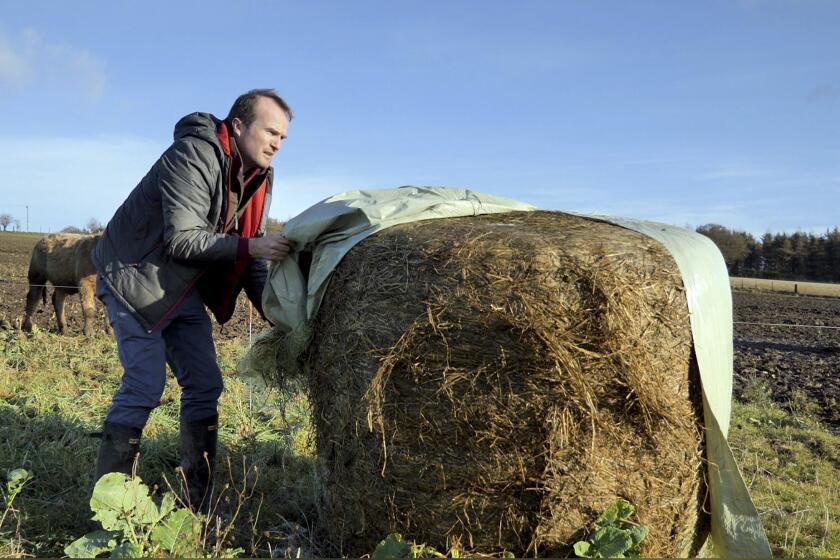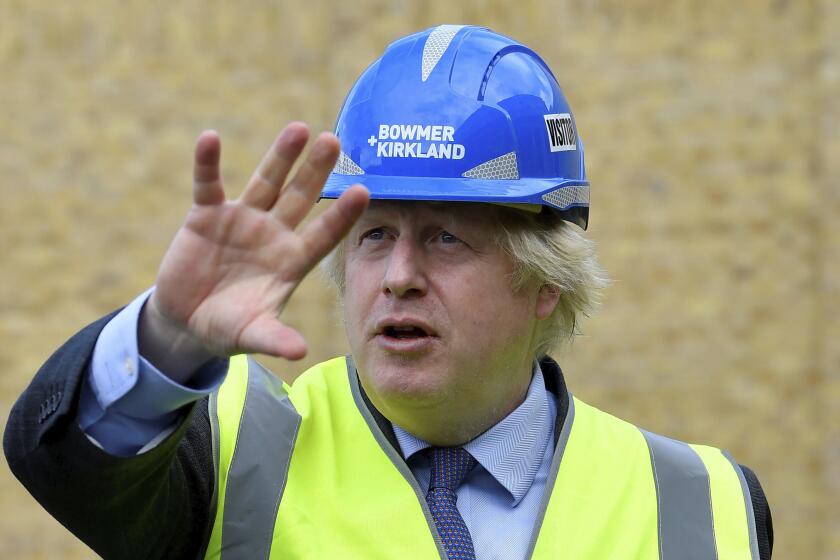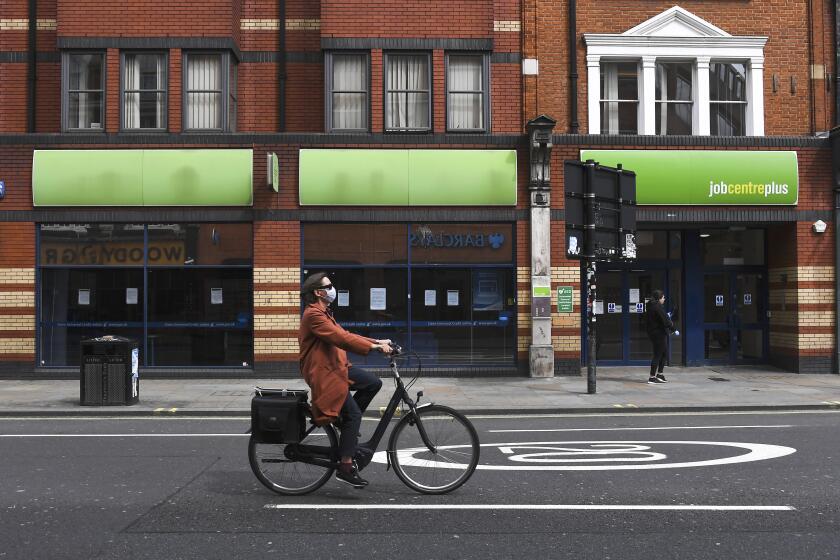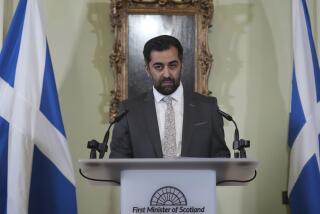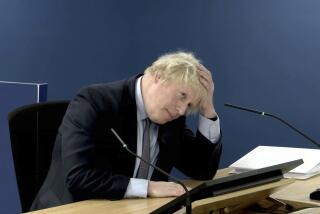Scotlandâs handling of the coronavirus puts independence back on the agenda
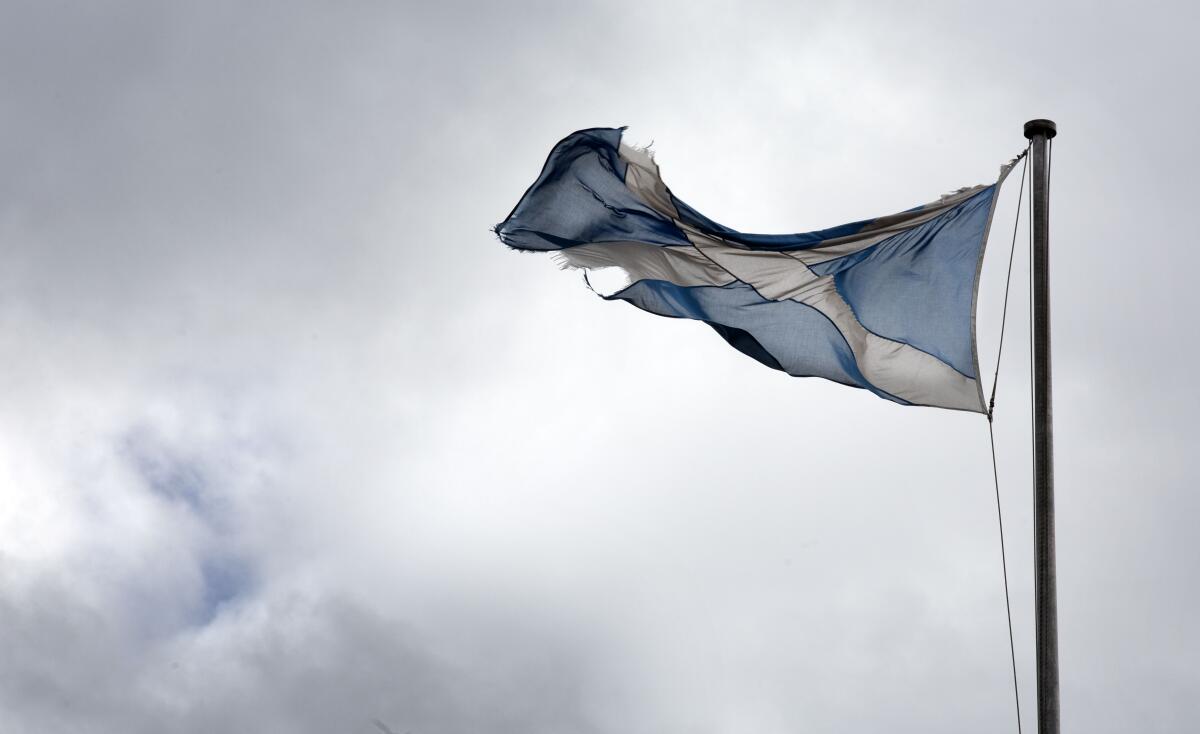
EDINBURGH, Scotland â There is wide agreement that Britainâs devastating coronavirus outbreak has been met by strong, effective political leadership. Just not from Prime Minister Boris Johnson.
While Johnson has often seemed to flounder and flip-flop his way through the biggest national crisis in decades, Scottish leader Nicola Sturgeon has won praise for her sober, straight-talking response.
The gulf between the neat, concise Sturgeon and the rumpled, rambling Johnson has catapulted the idea of Scottish independence from the United Kingdom â the long-held dream of Sturgeonâs nationalist government â back up the political agenda.
The issue appeared settled when Scottish voters rejected secession by 55% to 45% in a 2014 referendum. But after Brexit and COVID-19, âthere are signs that the anchors of the union are beginning to shift,â said Tom Devine, emeritus professor of history at the University of Edinburgh.
Devine said Sturgeonâs government âhas demonstrated it can manage the greatest catastrophe since World War II. And that suggests to some people who might have been on the edge of âyesâ and ânoâ [for independence] that they could actually run a normal government.â
Recent opinion polls support that view.
Brexit has upended the political landscape and exposed old divisions among England, Scotland, Wales and Northern Ireland, fraying the ties that bind the U.K.
âFor the first time in Scottish polling history, we have supporters of independence outnumbering opponents over an extended period,â said John Curtice, professor of politics at the University of Strathclyde.
One long-simmering reason is Britainâs departure from the European Union. Brexit is resented by many in Scotland, which voted strongly in 2016 to remain in the bloc. Britain officially left the EU on Jan. 31, although the economic break â and potential shock, if a trade deal isnât struck between the two sides â wonât occur until the end of the year.
The new factor is the pandemic, which has put the contrasting styles of Sturgeon and Johnson to the test.
The four parts of the U.K. â England, Scotland, Wales and Northern Ireland â acted together to impose a nationwide lockdown in March. But Sturgeonâs semi-autonomous government has been more cautious in lifting it for Scotland than Johnson has for England, keeping businesses such as bars and restaurants shut for longer and cautioning against a hasty return to travel and socializing.
She gives televised news conferences several days a week (Johnsonâs government stopped doing so in June) and often wears a tartan face mask in public, a gesture that conveys both prudence and patriotism.
âI think she has done a great job,â said Pamela McGregor, who runs a pub here in the Scottish capital, Edinburgh. âShe has been very calm and very respectful.â
Curtice said Sturgeon had âleveled much more with peopleâ than Johnson about the hardships of the pandemic.
âThe U.K. government is very defensive, very reluctant to admit mistakes,â he added. âAnd Boris has been much more, âWe think you need to go back to work because itâs good for the economy.ââ
U.K. Prime Minister Boris Johnson made financial pledges on schools, housing and infrastructure amid a coronavirus crisis with a death toll of 43,000.
Johnsonâs government was shaken early in the outbreak when both he and Health Secretary Matt Hancock contracted the virus. Johnson spent three nights in intensive care. His administration has made U-turns on issues including wearing masks in public and whether to quarantine arrivals from abroad.
Public trust in the government suffered when Johnson aide Dominic Cummings broke lockdown rules by driving 250 miles to his parentsâ house â and kept his job. When Scottish Chief Medical Officer Catherine Calderwood flouted her own advice by traveling to her second home, she resigned within hours.
Some of the difference between the two governments is style rather than substance. Scotland shared in the rest of Britainâs early mistakes in confronting the pandemic â notably, a failure to protect elderly residents in nursing homes, where many died.
The coronavirus has played a part in 4,200 deaths in Scotland, which has a population of 5.5 million, making it one of the highest per-capita rates in Europe. In England, which has 10 times the population, there have been about 50,000 deaths in which COVID-19 was a factor, according to official statistics.
The British economy shrank by a fifth in the second quarter, marking the deepest coronavirus-related slump among the worldâs seven leading economies.
Ramsay Jones, a former advisor to ex-Prime Minister David Cameron, said Sturgeon is a skilled communicator, but has largely acted in concert with the central government in London over the coronavirus.
âHas anything materially been done different? Not really,â he said. âThe car that theyâre presenting in the showroom looks shinier, looks well-polished. But lift the hood â itâs no different.â
Sturgeon knows that turning increased support for independence into reality will be a challenge.
An election for the Scottish Parliament is due in May. If Sturgeonâs Scottish National Party wins another anticipated majority, she is likely to demand a new independence referendum. But a binding referendum needs the central governmentâs approval, and Johnson insists heâll say no. Few think the cautious Sturgeon would emulate Catalan separatists in Spain and hold an unauthorized vote.
Sturgeon is also facing potential fallout from an inquiry into how her government handled sexual assault allegations against former First Minister Alex Salmond.
Supporters of independence are encouraged, but wary.
âAlthough thereâs more and more people coming on board the independence movement, thereâs a sort of feeling that weâre a wee bit stuck,â said Gerry Mulvenna, a pro-independence activist in Edinburgh. âI sense there is a shift. But how do we get there?â
The pro-independence camp in a new referendum would also have to convince voters that an independent Scotland could thrive economically. Thatâs not an easy task in an uncertain era.
You might think that eating your way through the land of lochs and Robert Burns might yield slim pickings. Youâd be wrong about that -- and the haggis.
Devine said the pandemic has shown that âitâs a pretty cold world out there â and I think the Scots in the majority still remain a pretty canny people.â
Many Scots say they simply have more urgent things to worry about. Edinburghâs streets in August are usually thronging with visitors to the arts festivals that turn the city into an international melting pot of creativity. This year, the city is unnaturally quiet. Many businesses are still shut or struggling.
âI feel like Iâm just concentrating on the pandemic and surviving at the moment,â said McGregor, who recently reopened her tiny Edinburgh bar after lockdown. âI would love to have independence, but I think maybe now is not the time.â
More to Read
Sign up for Essential California
The most important California stories and recommendations in your inbox every morning.
You may occasionally receive promotional content from the Los Angeles Times.
